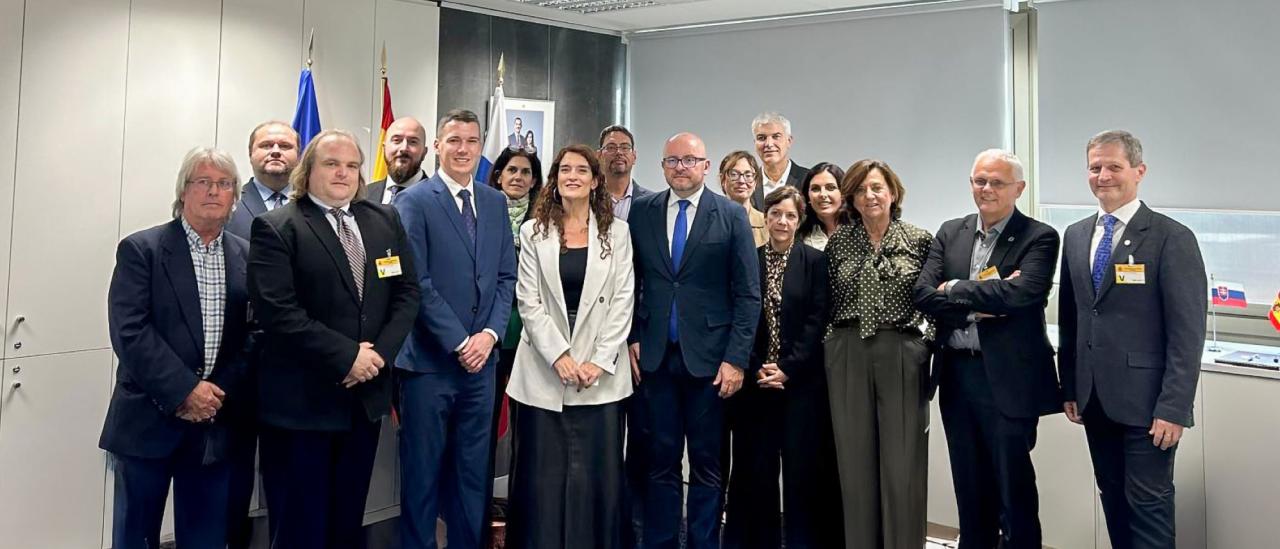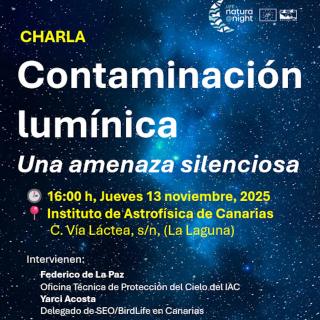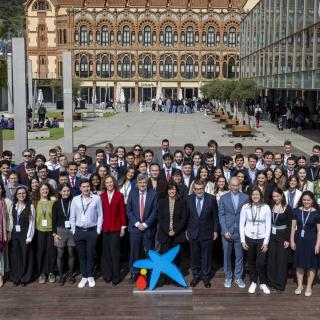The European Solar Telescope (EST) project has taken a decisive step towards construction with the establishment of the Board of Governmental Representatives (BGR), marking the first formal commitment at the governmental level to this European flagship in solar research.
Until now, EST has been driven by a scientific consortium of universities and research institutions across Europe. The creation of the BGR transforms EST into a collaboration among European nations, whose national governments lend political support to the project and to the creation of a future European Solar Telescope European Research Infrastructure Consortium (EST ERIC).
The 1st Meeting of the BGR, hosted by the Spanish Ministry of Science, Innovation and Universities (MICIU) in Madrid on 28 October, brought together representatives from Spain, Slovakia, and the Czech Republic. The Board adopted its Terms of Reference, elected its Chair, Vice-Chair and Secretary, and defined a roadmap towards the establishment of the EST ERIC, which will govern the construction and operation of the telescope.
Spain was represented by Inmaculada Figueroa Rojas, Deputy Director-General for International Consortia, Organisations and Research Infrastructures, together with Ana Aricha Yanguas and Esther Martín Malagón, who was elected as the first Chair of the BGR. Slovakia was represented by Jakub Birka, Director General at the Ministry of Education, Research, Development and Youth and Robert Ševčík, Advisor to the Secretary of State at the same ministry and elected Vicechair They were accompanied by senior officials and scientists including Pavol Hvizdoš, Vice-President of the Slovak Academy of Sciences and Jurag Tomaga, Slovak Ambassador to Spain. The Czech Republic was represented by Marek Vyšinka, Head of Unit for Research Infrastructures at the Ministry of Education, Youth and Sports.
The meeting also featured senior scientific representatives from the Astronomical Institute of Slovak Academy of Sciences (AISAS), the Instituto de Astrofísica de Canarias (IAC), the Instituto de Astrofísica de Andalucía (IAA-CSIC) and the Astronomical Institute of the Slovak Academy of Sciences, (AISAS) . The directors of the three institutions, Valentín Martínez Pillet (IAC), Olga Muñoz Gómez (IAA-CSIC), and Peter Gömöry (AISAS), took part in the event, reaffirming their institutions’ commitment to the joint European effort.
Members of the European Solar Telescope Canarian Foundation, the entity which manages the project’s interim phase, presented the status and key aspects for the future development of the project to the Board.
A highlight of the event was the signing of a Memorandum of Understanding between Spain and Slovakia, by Eva Ortega Paíno, Secretary General for Research at MICIU, and Jakub Birka, formalising Slovakia’s participation in EST. The agreement paves the way for broader governmental involvement across Europe and strengthens the project’s future under the ERIC framework.
Visit to Observatorio del Roque de los Muchachos
Following the meeting in Madrid, representatives of the delegations travelled to the Observatorio del Roque de los Muchachos (ORM) on La Palma.
There, they were joined by Javier Franco Hormiga, Director of the Canary Islands Agency for Research, Innovation and Information Society (ACIISI), an agency that has supported the EST project since its preparatory phase and played a key role in establishing the project office in the Canary Islands.
At the ORM, they visited the site where the European Solar Telescope will be built, as well as several of the world-class facilities already operating or under construction at the observatory. Located at 2,396 metres above sea level and managed by the Instituto de Astrofísica de Canarias (IAC), ORM is internationally recognised for its exceptional observing conditions, protected by Spain’s Law for the Protection of the Astronomical Quality of the IAC Observatories (Law 31/1988). They also had the opportunity to experience firsthand the exceptional quality of the La Palma sky, which makes it one of the best astronomical locations on Earth.
With this step, the European Solar Telescope consolidates its position as a truly European endeavour, not only a collaboration among scientists, but a shared commitment among nations to build the world’s most advanced solar observatory in the Canary Islands.
“The establishment of the Board of Governmental Representatives is a historic milestone for EST,” said Manuel Collados, EST Principal Investigator at the IAC. “It demonstrates that European governments are ready to take joint responsibility for advancing solar research and for building one of the most ambitious scientific infrastructures in the world.”



